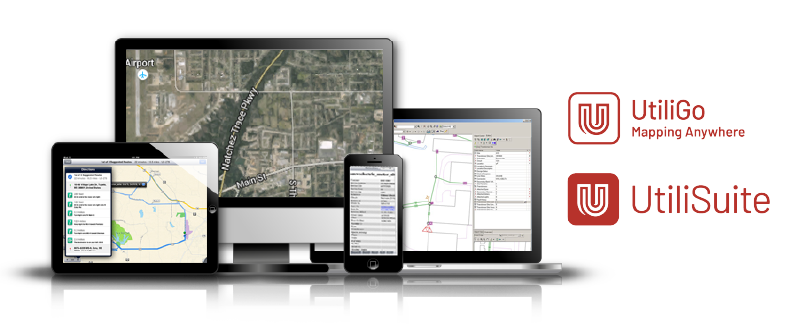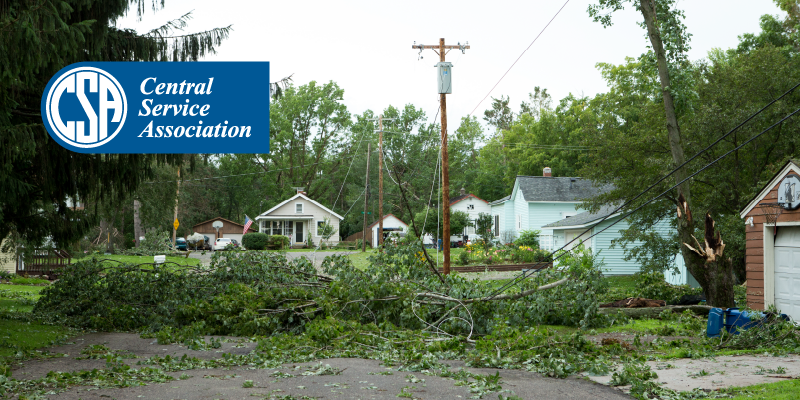IQGeo and CSA partner to create more reliable grids for rural electric utility operators
Editor’s note: This article originally appeared in the February 2022 edition of Lines Magazine, published by Central Service Association (CSA). CSA is a partner of IQGeo and the UtiliGo product referenced in the article is a CSA branded version of IQGeo’s mobile software technology. UtiliTrak is CSA’s utility network mapping and management solution.
In June 2021, Dickson (TN) Electric System (DES) was preparing for an LED streetlight replacement project. With nearly 3,000 lights involved, they needed a simple way to:
- Know where the streetlights were all located
- Graphically show what needed to be done to each light (replace entire unit while installing the Sensus Flexnet Module or just install the Flexnet Module to monitor lights remotely)
- Provide contractors and staff with a tool to track their progress and update data in the field
As a long-term UtiliSuite user, Mike Billingsby, Director of Engineering, was very interested when CSA announced its newest UtiliSuite product – UtiliGo, which enables a utility system’s field personnel to access and update network infrastructure information on mobile Apple iOS, Android, and Windows devices.
“UtiliGo checked all the boxes for this project,” said Billingsby. “Our three main concerns were 1) Fast turn-around was important to prepare the bid packages for both the materials needed and project labor. 2) Getting the data out of UtiliTrak in a format that outside contractors could use efficiently. 3) Updating UtiliTrak with the revised light information after the work was completed.”
Billingsby and the DES team quickly learned how easy UtiliGo was to use. At first, they pushed it out to a few employees. Those employees only had good comments about it and the fact that it was easy to use with a quick learning curve. Working with Katrina Wesson, they could use UtiliGo, UtiliTrak and other tools to fully manage the streetlight project.
Once everything was on track with the streetlight replacement project, the DES team started thinking about other possible UtiliGo projects.
Two immediate ideas were:
1. Utilizing field data for routine pole replacements
2. As a Damage Assessment Tool for large outages
Pole Replacement Project
Using UtiliGo, DES has made progress setting up processes for their pole replacement project. This has included creating symbology for the poles that need to be replaced and creating work orders to track the project segments. The visual representation they have built helps contractors who aren’t familiar with the system easily find poles and identify the work needed. Another benefit is how easy it is for DES staff to update One Call data.

Large Scale Damage Assessment Becomes Priority
Billingsby had gotten sidetracked by other projects and hadn’t invested much time in preparing to use UtiliGo as a damage assessment management tool. Then, DES was hit by an EF2 tornado around 2 a.m. on December 11, 2021.
In the 35 minutes and the 25 miles that the tornado was on the ground in their system:
-
18,000 of their 36,800 customers (roughly 50%) were without power
-
Four of DES’s eight substations were without power, because TVA lost two 161kV lattice tower structures
-
189 poles were broken, and 90 distribution transformers were damaged
-
Two miles of 144 count fiber were down
"We were faced with a tremendous amount of destruction and had to quickly decide how to handle it,” said Billingsby. “I had pitched the idea of using UtiliGo to my staff three months before but hadn’t tested it to see if it would work. Everyone had smart phones, so we felt sure it would work. In the end, we made the decision to try UtiliGo, because we just didn’t have a better option.”
To plan the workflow based on the assessments, DES developed map symbology to track their progress. Then, their assessment began with six people in the field using UtiliGo, which included taking pictures. Three more team members took pictures in the field and sent them to the engineer in the office to assess. The map symbols identified needs as: unassessed, trees only no damage to facilities, right-of-way crew plus material needed from warehouse, material needed from warehouse, material ready to be picked up by crew, needs line crew, work complete and FEMA work complete.
“The flexibility of UtiliGo was very helpful,” said Billingsby. “Some of the field names were poorly worded initially, which caused some confusion, but I was able to change them on the fly. Everyone could access the information, so our departments were able to work more efficiently. Plus, our team was able to work with clean data every day, because we updated UtiliTrak every night and pushed the clean data back into UtiliGo.”
The workflow process worked well. When the warehouse saw a red house pop up on their iPad, they pulled the material needed per the assessment, tagged it with the damage assessment or pole number, and changed the status to let the crews know that the material was ready to be picked up. The warehouse crew worked closely with accounting to make sure that inventory in Works was updated, too. Everything flowed smoothly and kept the crews moving.
As a FEMA level event, there was additional information that needed to be tracked for reimbursement, which was possible through UtiliGo. Those documentation requirements included: pole numbers, transformer numbers, latitude and longitude coordinates, address, material documentation per location, damage pictures and more.
“The UtiliSuite team worked very closely with us following the tornado,” said Billingsby. “No other UtiliGo user had experienced an outage event of this magnitude, so we were all learning. I can’t say enough about my team and CSA’s team. From adding latitude/longitude and cleaning up missing data to properly formatting pictures and assigning crew types, we figured it out.”
Anyone who has ever worked a FEMA event knows how grueling the process is. In large part because of UtiliGo, DES got excellent feedback from FEMA:
Good afternoon,
I wanted to let you know that this is one of the most impressive and detailed damage inventory reports that I have ever received from an EMC.
Outstanding work to you and your team, sir! ….
Sincerely,
Phillip Jones
FEMA
Mike’s key UtiliGo benefits:
- All information from UtiliTrak, including data from CMB, is in UtiliGo, which makes it easy for field staff to access necessary data.
- Customizable symbology to track progress and streamline processes.
- Contractors with no system knowledge can easily determine where they need to be and what to do. Plus, data is updated in the field using UtiliGo to ensure accurate information.
- DES staff oversees project progress by running queries by date, crew, and many other criteria. Plus, queries can be exported to Excel for reporting and evaluation.
- Attaching pictures in UtiliGo assists with inventory control, FEMA reimbursement and project planning.
- Important data back to UtiliTrak from UtiliGo ensures accuracy in their master infrastructure records.
If you would like to learn more about CSA, UtiliGo or any of the UtiliSuite products, please contact Charles Huddleston at chuddleston@csa1.com.


 Previous
Previous




